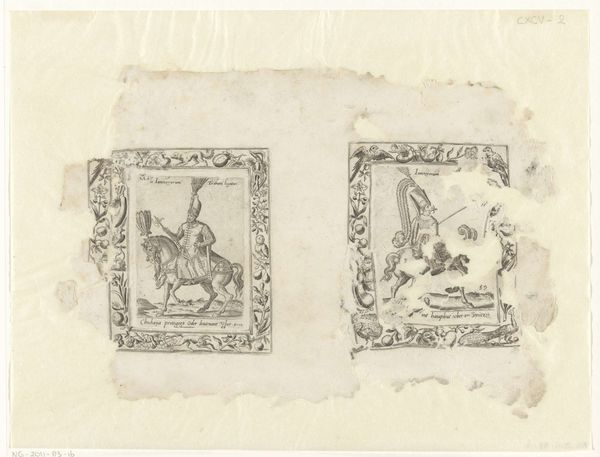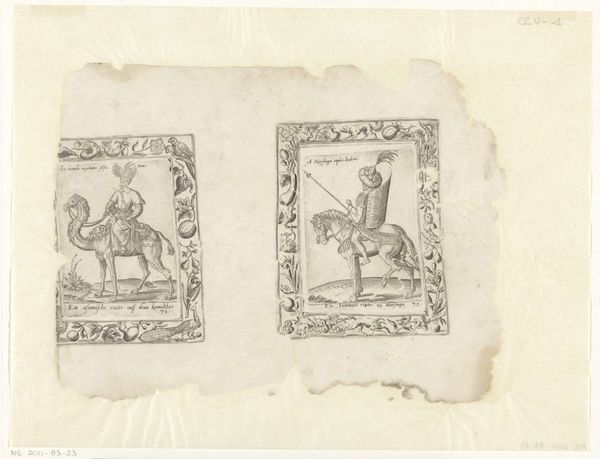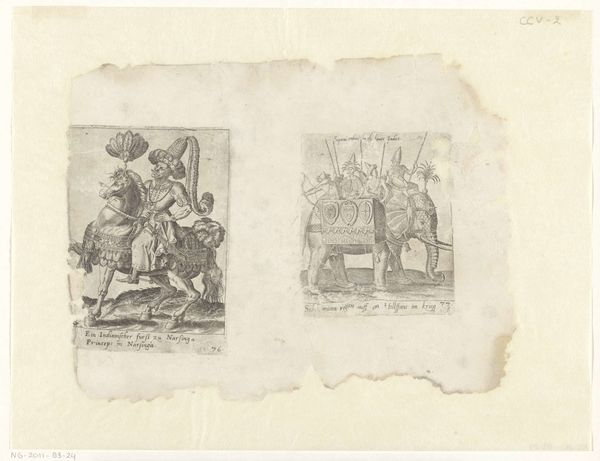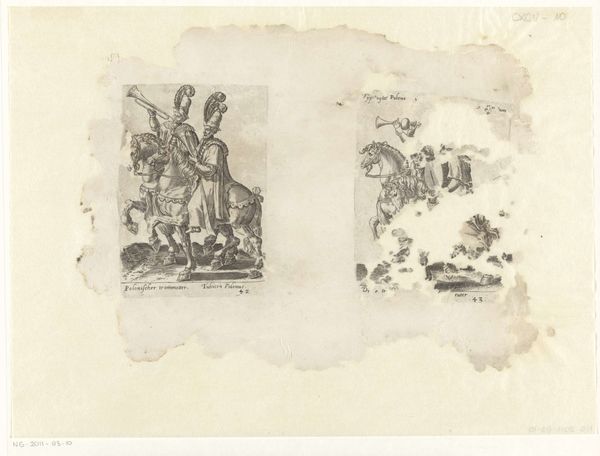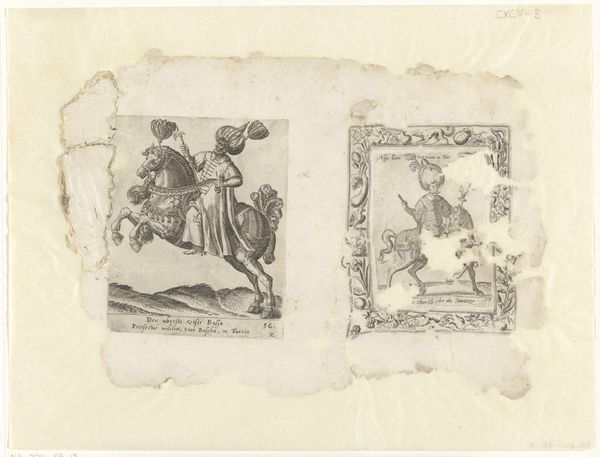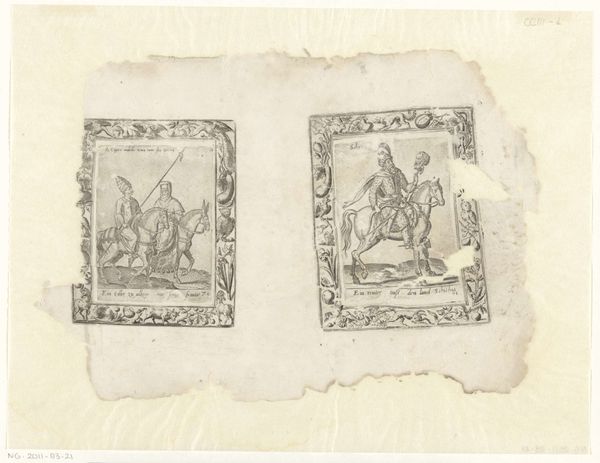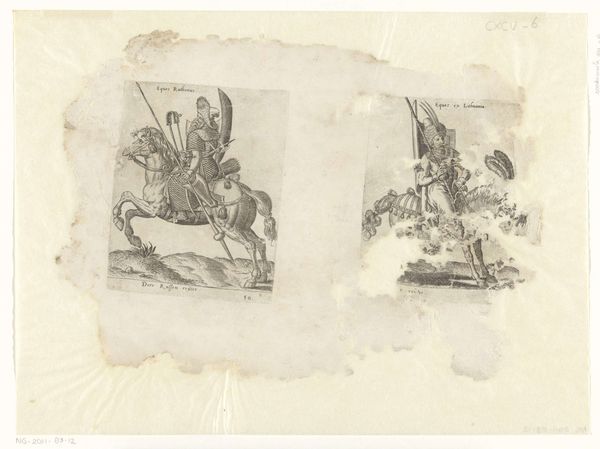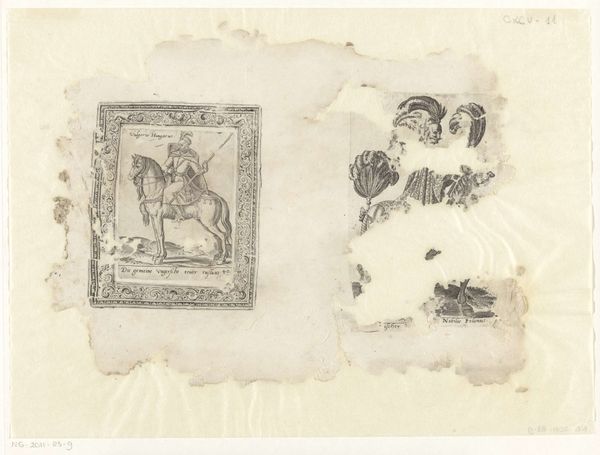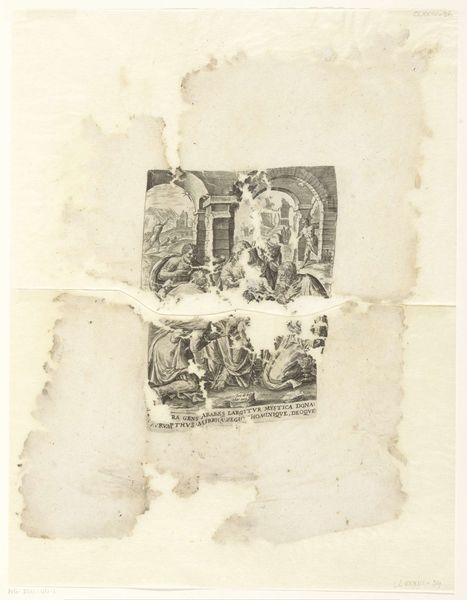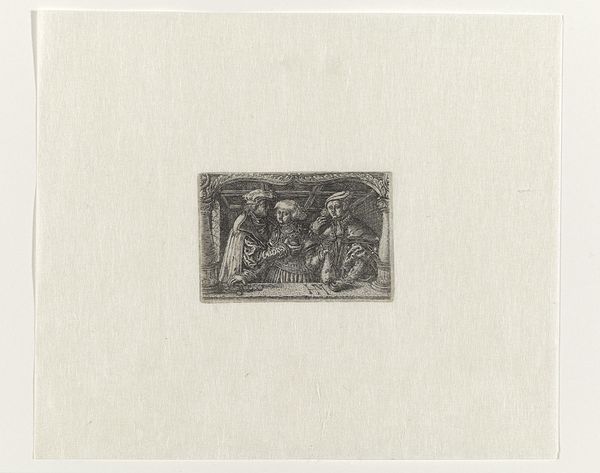
print, engraving
# print
#
pen sketch
#
old engraving style
#
figuration
#
11_renaissance
#
line
#
history-painting
#
engraving
Dimensions: height 236 mm, width 332 mm
Copyright: Rijks Museum: Open Domain
Abraham de Bruyn’s etching captures the Tartaarse en Walachijnse ruiter, or Tartar and Wallachian Riders. The horse and rider motif is a powerful emblem, here representing martial prowess and nomadic culture. The rider's pose, with a staff held aloft, echoes classical equestrian statues meant to convey authority. We see echoes of this motif in ancient Roman cavalry depictions, later resurfacing in Renaissance equestrian portraits of rulers, each time imbued with the specific cultural values of the time. The symbolism of the horse is particularly fascinating. Across cultures, the horse has signified virility, freedom, and conquest. Think of the horses from the Apocalypse, or the steeds of the Valkyries; these connect us to collective memories of power and untamed energy, engaging subconscious levels. This image, though seemingly simple, is a node in a vast network of cultural symbols, continually evolving yet forever tethered to primal human emotions.
Comments
No comments
Be the first to comment and join the conversation on the ultimate creative platform.


